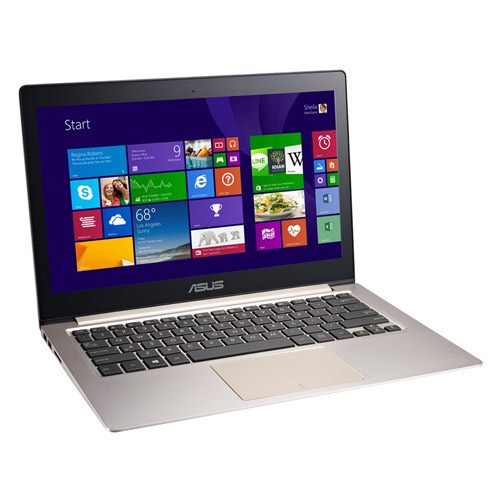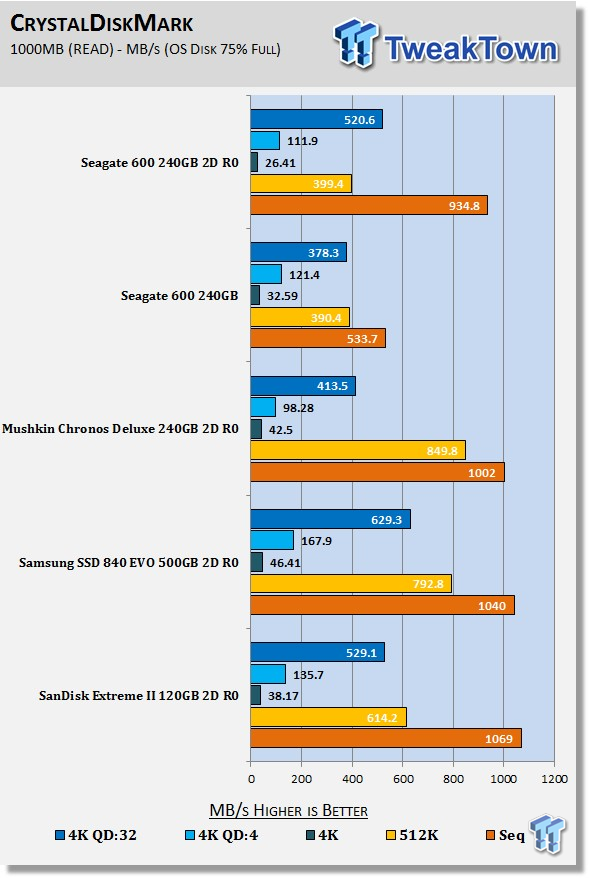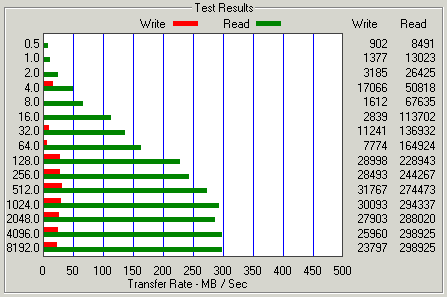

- #RAID 0 SSD BENCHMARK INSTALL#
- #RAID 0 SSD BENCHMARK FULL#
- #RAID 0 SSD BENCHMARK WINDOWS 10#
- #RAID 0 SSD BENCHMARK PC#
While SSDs are more reliable than hard disk drives (HDDs), there is no moving part for an SSD, so it is still prone to failure, which can result in data loss. Floor-standing RAID units are widely used for large storage area networks (SANs), with huge amounts of data and cache memory, and RAID is also used in gaming PCs and by business users. Nowadays, most motherboards have built-in RAID, but it is unnecessary and can plug RAID controllers into motherboards where RAID is unavailable. SSD RAID is a methodology to boost solid-state drive (SSD) performance and is commonly used to protect data by distributing redundant data blocks across SSDs.Ī redundant array of independent disks (RAID) is a virtualization technology of data storage that combines multiple physical storage drives into single or multiple logical units for data redundancy and optimization performance. We may make money when you click on links to our partners.
#RAID 0 SSD BENCHMARK FULL#
You can read our full review of the WD_BLACK SN850 1TB drive here and they can be purchased for $199.99 each over on Amazon.Enterprise Storage Forum content and product recommendations are editorially independent.

It would have been nice to have a bootable NVMe RAID0 array on this platform, but these are still pretty impressive numbers! Let us know what you think in the comments below! Lastly, on Anvil’s Storage Utilities we managed to pull off a score of 30,626 points! Over on ATTO Disk Benchmark we managed to reach 12.91 GB/s read and 9.54 GB/s write. We topped out at 12,818 MB/s sequential read and 10,248 MB/s sequential write in CrystalDiskMark. Performance numbers looked pretty good on our test machine that was running an Intel Core i5-11600K processor. This gives us a 1TB RAID0 array as a secondary drive.


#RAID 0 SSD BENCHMARK WINDOWS 10#
So, after waiting days and figuring out what we wanted to do wasn’t possible we settled for creating a stripped (RAID0) partition in the Windows 10 Disk Management utility. Our desire to create bootable PCIe Gen4 RAID solution appeared to be dead into the water. This means no RAID support for CPU attached storage drives through the BIOS. Next, we talked to Intel who didn’t think VMD was exposed on Rocket Lake. Legit Reviews asked ASUS about our setup difficulties and they said that only Intel branded drives can be used in RAID off these slots due to the Intel VROC (Intel Virtual RAID on CPU) requirements. PCIe RAID should be technically possible since both M.2_1/M.2_2 attach to the Rocket Lake CPU. We even tried an ASUS Hyper M.2 x16 card without success. The two NVMe drives show up in the BIOS, but there is no option to create a RAID array with them. We wanted to create a bootable NVMe RAID array, but quickly ran into problems.
#RAID 0 SSD BENCHMARK PC#
This is a step that you might want to do when you first build your PC as getting to the slots can be a bit of a chore later on. The blue film is left on in the images below.
#RAID 0 SSD BENCHMARK INSTALL#
They are both accessible under heatsinks and you’ll need to remove the blue protective film from the thermal pads when you install the drives. On this particular motherboard M.2_1 and M.2_2 are the two slots that have PCIe 4.0 functionality. So, we asked Western Digital to send over some WD_BLACK SN850 NVMe SSDs and the obliged by sending two 1TB drives over. This also means that running RAID should be possible and we wanted to give that a shot. Quad M.2 slots! Two of the slots on this board are PCIe Gen4 supported, so long as you are running an 11th Gen Intel Core ‘Rocket Lake’ processor. When the Intel Z590 platform came out we noticed that motherboards like the ROG Maximus XIII Hero had four M.2 slots.


 0 kommentar(er)
0 kommentar(er)
